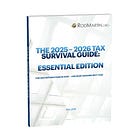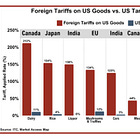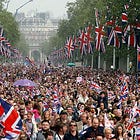Canada is Losing the Trade War
As Governor of the Bank of England, Mark Carney lost the battle over Brexit. Now as Canada's PM he’s failing in his bid to shield Canada’s industrial heartlands from U.S. tariffs.
NOTE: When Donald Trump announced his “Liberation Day” tariffs, the Beltway establishment confidently predicted that the U.S. economy would plunge into recession by mid-summer, the nations of the world would band together to destroy our economy and isolate us from the world, etc. ad nauseam.
In reality — and as we predicted — every major U.S. trading partner has lined up to make deals on Trump’s terms, having already signed or currently negotiating trade deals with the President’s team. In every case the deals have been vastly more favorable to the United States than anything that went before. And in what was promised to be the thorniest case of all, China, Trump’s new agreement with Xi Jinping is so lopsided that the CCP has actually agreed to pay U.S. tariffs of 47 percent while only charging the U.S. 10 percent.
That’s effectively a surrender. And as we told you from the first, but very few others did, it was inevitable
India aside, the only major holdout is Canada. But as the following analysis makes clear, Canada needs the U.S. a lot more than America needs Canada. That has been Donald Trump’s point all along. And that is precisely the point his critics always missed. — RDM
by Melissa Lawford
November 17, 2025
After Donald Trump imposed tariffs on steel imports to the U.S. in the spring, the manufacturing plant in Hamilton, Ontario, has had no new orders. Mass lay-offs at Canada’s rail freight-carriage maker National Steel Car are expected to hit a little bit before Christmas.
“The building I’m in is working on number 290 of a 300-car order. We’ll be done by the first week of December and then we will be laid off,” says Jonas Barry, 51, who has worked at the factory for the last eight years. “Probably most of the plant will be laid off.
“People are fearful it could last until March or beyond,” he adds. “That’s where the real anxiety is coming from. Most of the people I work with are young guys supporting a wife and two kids.”
Hamilton, which sits just across from the U.S. border in Ontario’s manufacturing corridor, produces more steel than any other city in Canada. It is at the sharp end of the U.S. president’s trade war, which is sending shockwaves through Canada’s economy.
One third of the country’s national income comes from exports, and more than 70 percent of these go to the U.S. Although the majority of goods are protected from Trump’s blanket tariffs under the U.S.-Canada-Mexico Agreement (USMCA), Canada’s car, steel, and aluminium industries are getting hammered by sector-specific levies.
Exports have slumped, business investment has plummeted, and the national economy is teetering on the brink of recession.
The man supposed to be coming to Canada’s rescue is Mark Carney. The former governor of the Bank of England was elected prime minister of Canada in April on a promise to take on Trump, who has repeatedly stated his desire to turn Canada into America’s 51st state.
“America wants our land, our resources, our water, our country. But these are not idle threats. President Trump is trying to break us so that America can own us,” Carney said in his election acceptance speech.
“That will never, that will never, ever happen.”
Carney was labelled the “high priest of Project Fear” by the Brexiter Jacob Rees-Mogg during the UK’s 2016 referendum on its European Union membership. Back then, as Bank of England governor, Carney tried to battle against Brexit and lost.
Will he do any better in the battle against Trump? So far, with factories closing and even moving to the United States, the signs are not promising. Let’s take a look.






